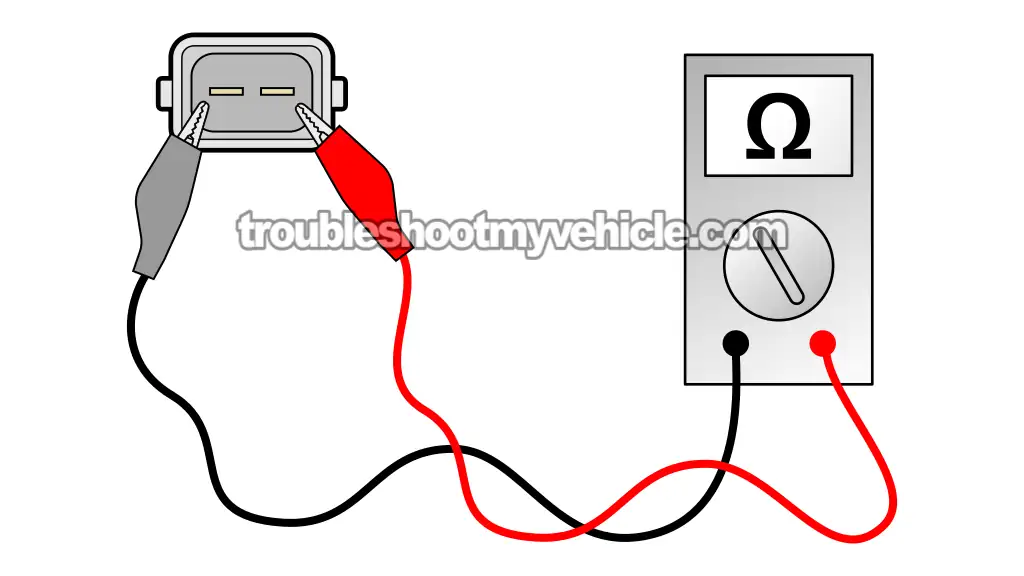TEST 2: Hot Temperature Resistance Check

Now that you've knocked out the cold resistance test in TEST 1, it's time to apply some heat to the sensor and check if it's resistance drops like it should.
When it gets up around 200°F, this sensor oughta read somewhere between 400 and 1,500 Ohms. To get it that hot, we're gonna dunk the metal tip in boiling water —water boils at 212°F, so that'll do the trick.
If the resistance doesn't fall into that range while it's sitting in hot water, then yep —the sensor's done for.
CAUTION: Boiling water will burn the heck out of you, so play it safe and follow these tips:
- Don't touch or handle the sensor while its hot.
- Only submerge the sensor's metal part. Keep the plastic plug and terminals completely dry.
- Use long jumper wires with insulated alligator clips so you can stay clear of the heat. Need some? —Jumper Wires With Insulated Alligator Clips (at: amazon.com).
- This is an off-vehicle test —don't try it with the sensor still installed in the throttle body.
- Let the sensor cool off completely before you reinstall it on the throttle body.
Alright, here's how to run this test:
- 1
Clip your multimeter leads to the sensor's two terminals.
IMPORTANT: Use jumper wires with alligator clips so you don't have to get close to the heat. Keep your hands far away from the boiling water during the test. - 2
Set the multimeter to read Ohms (Ω).
- 3
Boil a small pot of water using a stove or hot plate.
If you've got a kitchen thermometer, check that the temp is sitting between 200–212°F (93–100°C). - 4
Dip just the sensor's metal tip into the boiling water.
CAUTION: Don't let the plastic connector or terminals get wet.
IMPORTANT: Use tongs or hang the sensor using a piece of wire —never hold it with your hands. - 5
Watch the multimeter display.
With the sensor heated up, the resistance should drop down into the 400 to 1500 Ohms range. - 6
Take the sensor out and let it cool completely before handling it or reinstalling it.
Now let's break down the results:
CASE 1: You see 0 Ohms. That means the sensor's shorted out. It's toast —replace it.
CASE 2: Display shows OL (infinite resistance). That tells you there's a break inside —the sensor's dead.
CASE 3: Resistance falls outside the proper range. That's a clear sign the sensor's not working right. Time to get a new one.
CASE 4: Resistance is within spec. That's what you wanna see —the sensor passed the test.
If it also passed TEST 1, then the sensor itself is good. If you're still getting that trouble code, the issue is probably somewhere in the wiring between the sensor's 2-wire connector and the fuel injection computer.
More 3.9L V6 Dodge Ram Pickup Tutorials
You can find a complete list of tutorials for the 3.9L V6 Dodge Ram Pickup in this index:
Here's a sample of the tutorials you'll find in the index:
- How To Test The TPS (1989-1990 3.9L V6 Dodge Ram Pickup).
- How To Test The Fuel Pump (1989-1991 3.9L V6 Dodge Ram Pickup).
- How To Test The Engine Compression (1989-2001 3.9L V6 Dodge Ram Pickup).
- How To Test For A Blown Head Gasket (1989-2001 3.9L V6 Dodge Ram Pickup).

If this info saved the day, buy me a beer!

